How Not to Make a Wee Planet in GIMP
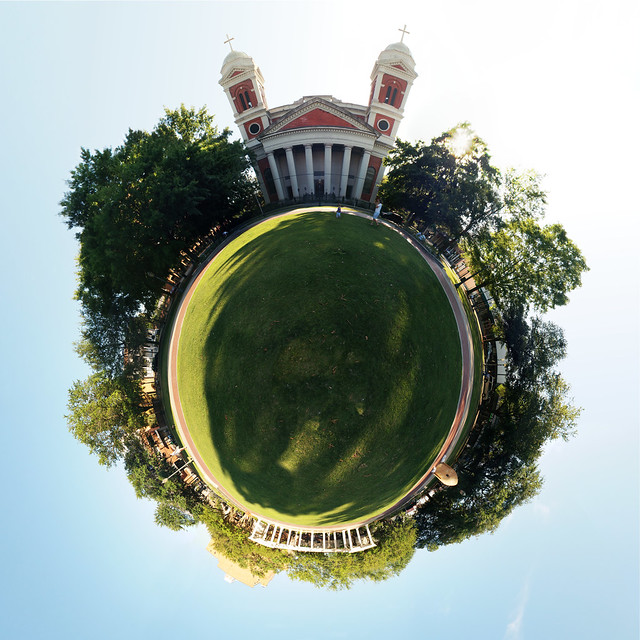
I was fooling around again recently with some “Wee Planet” stereographic panoramas (previously mentioned here), and came across some tutorials on doing this with Photoshop/GIMP using a Polar Coordinate distortion filter.
While this will give you a similar result to what you might see from a true stereographic projection, it is not quite as aesthetically pleasing I feel. This is because the Polar Coordinate transform is not a true stereographic mapping, and will tend to squish objects in a very non-pleasing way.
I’ve assembled a few examples to demonstrate the effect and for comparison. The examples here are from Flickr user gadl (Alexandre Duret-Lutz) and are Creative Commons BY-NC-SA. Thank you Alexandre for making these available!
And really, what better examples to use than from “La Ville-Lumière”, Paris!
Sacré coeur
I once had a wonderful lunch with some friends not far from here in Montmarte…
Starting with the equirectangular panorama projection below:
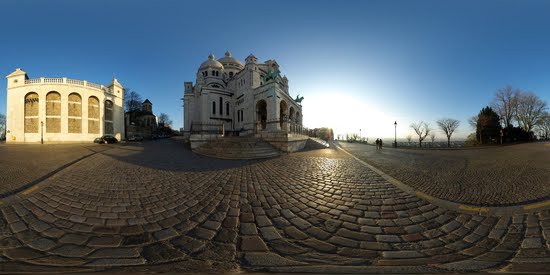
Equirectangular Sacré coeur by Alexandre Duret-Lutz
Running the image through
Filters → Distorts → Polar Coordinates…
in GIMP yields the results below…
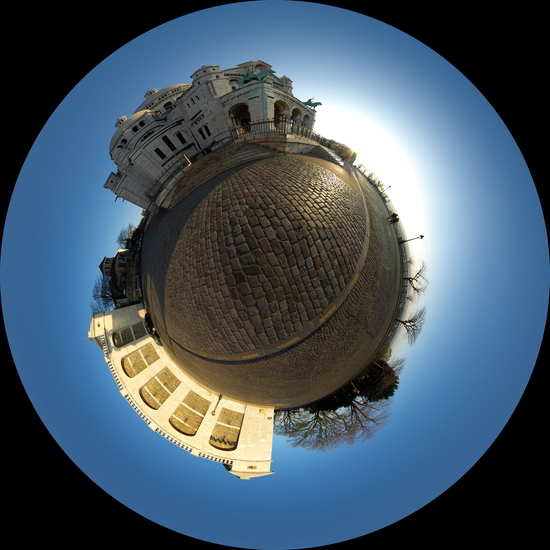
Polar Coordinate Distortion in GIMP
Notice how the Basilica is squashed in this view. In fact, all of the structures above the horizon have been seriously shortened. Because the polar coordinate transformation is essentially just remapping the image to a circle, notice also that the distance from the center to the outer edges is the same as the height of the source image.
Loading the image into Hugin, though, allows us to remap the output to a true stereographic projection:
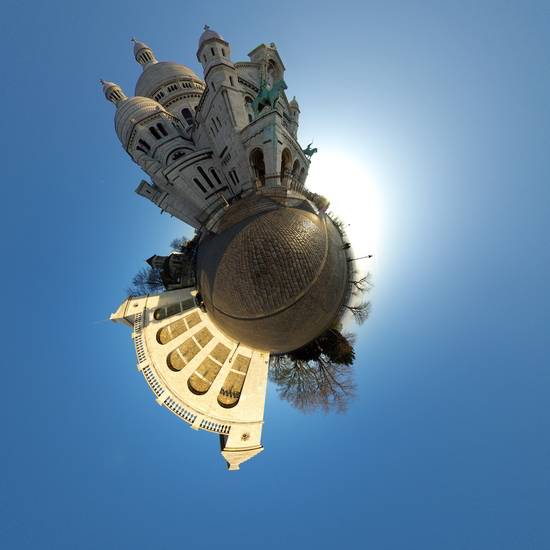
Stereographic mapping in Hugin
The results here are much more aesthetically pleasing, in my opinion. The local angles are preserved, and the relative prominence of objects above the horizon become much larger.
Here’s another view:
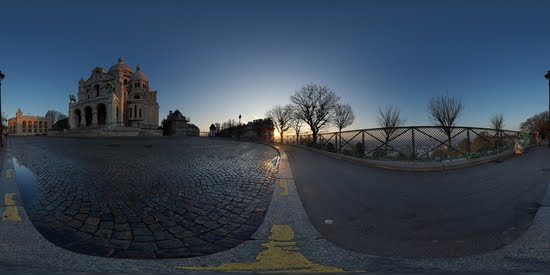
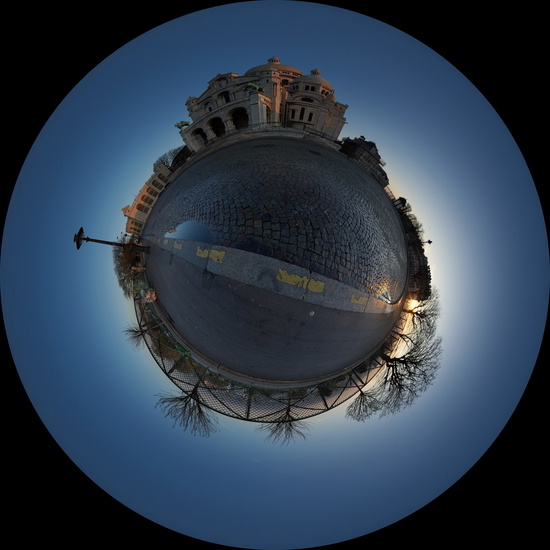
Notice how squished the lamp post and Basilica are…
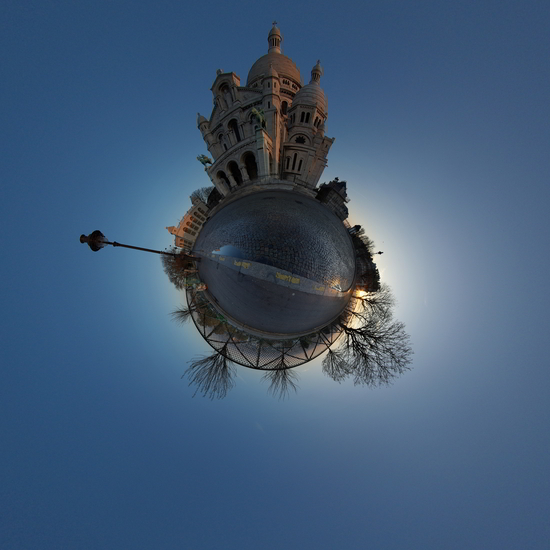
This looks much more like a tiny planet.
Here’s a view of Notre Dame at night…
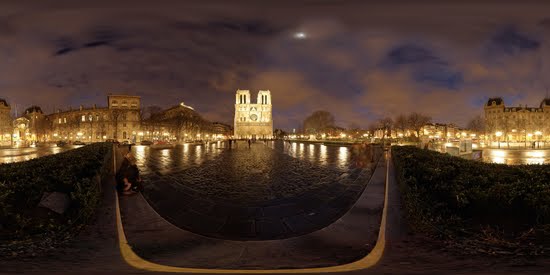
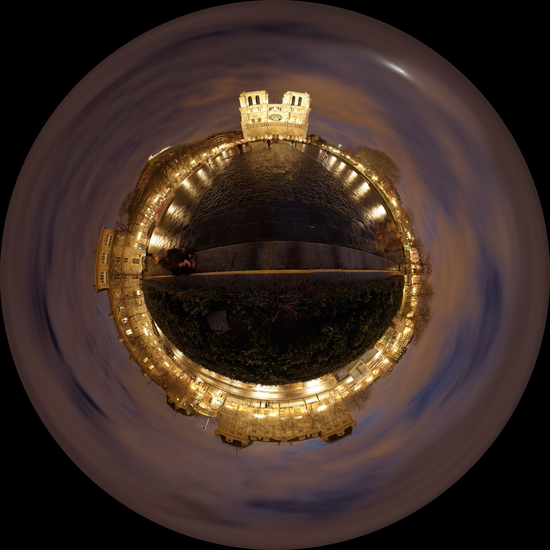
Polar Coordinate Distortion in GIMP
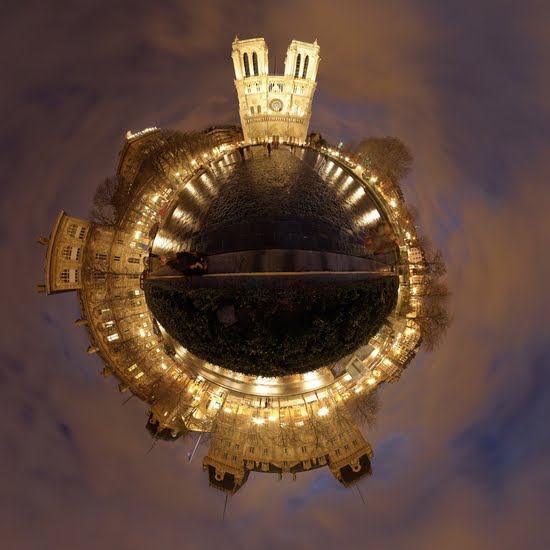
Stereographic mapping in Hugin
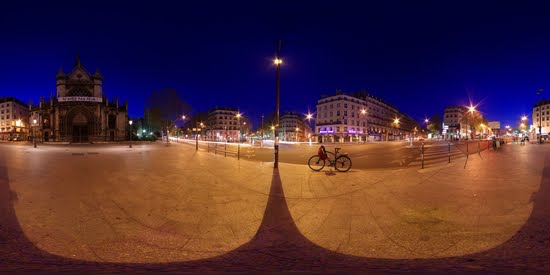
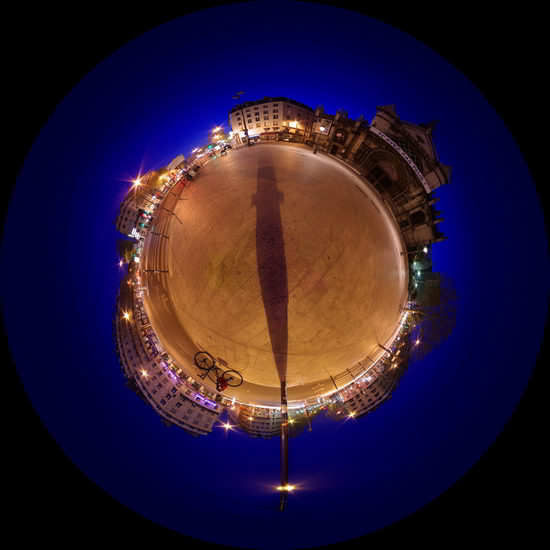
Polar Coordinate Distortion in GIMP
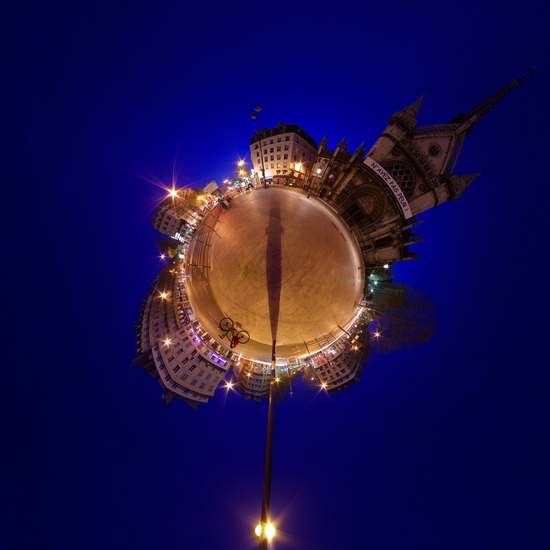
Stereographic mapping in Hugin
In each of these cases I personally much prefer the stereographic projection.
The only drawback of this method is that it requires a full 360° × 360° full panorama of your scene (for best results). This is not always practical if you’re shooting on the fly. If the scene you want to capture is intended to be a little planet, it’s definitely worth the time to capture a full panorama to map stereographic.
